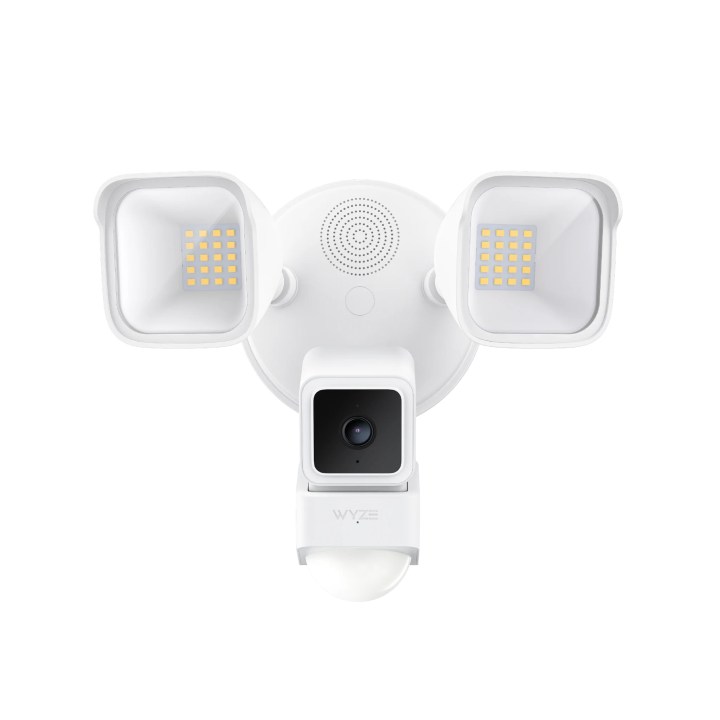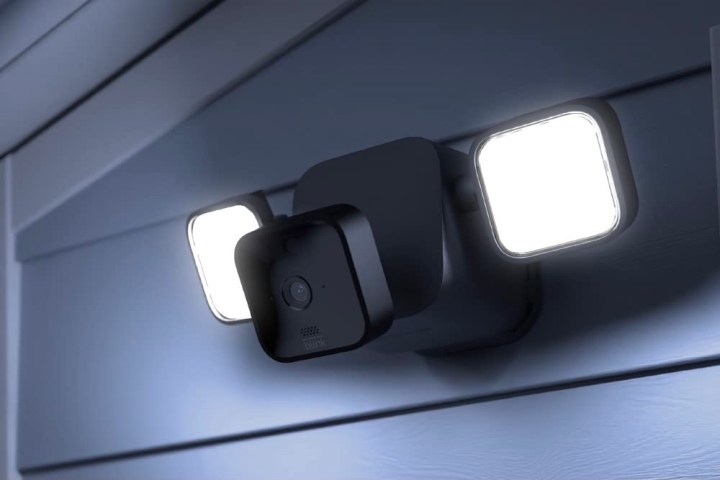Security cameras are one of the best ways to keep your home secure. Floodlight-equipped security cameras are great for seeing activity at night and instantly alerting any intruder that they’re being watched. Two great budget-friendly options in the smart floodlight security camera space are the Wyze Cam Floodlight and the new Blink Wired Floodlight Cam.
Amazon owns Blink, which comes with hefty Amazon Alexa integration and an ecosystem of products. Blink mainly produces smart cameras for different home areas, but like many smart home manufacturers, they don’t offer professional monitoring.

Wyze is slightly different. While they create budget-conscious smart home products, they make more than just cameras and have a subscription plan that offers professional monitoring. In addition, Wyze isn’t owned by Amazon but was created by former Amazon employees.
Returning to the specific floodlights made by each of these companies, they are actually more alike than they are different. We’ll dive into the most critical features of each and see which deserves your hard-earned dollars to protect your home. Note that the Blink option has not yet hit the market but will be available soon. We haven’t had a chance to test the products yet, but we’ll report back when we do!

Resolution and lights
The Blink and Wyze floodlight cameras can record up to 1080p resolution. They can record with or without the lights active and come with color night vision. Both can detect people automatically within their software, but Wyze can also detect animals, cars, packages, and even sounds. With each camera, you can adjust the areas where the cameras will notify you of motion. The Blink Wired Floodlight Cam does offer a broader field of view, at 143 degrees, compared to the Wyze Cam Floodlight’s 130-degree field of view.
The cameras both come with two lights that can illuminate the area, both of which are adjustable. Both lights also have a power level of 2600 lumens, but the Wyze option can be dimmed to your liking.
Smart integration
With the Blink Wired Floodlight Cam, you can easily connect it to Amazon Alexa and allow your Echo Shows to view and help interact with footage. On the other hand, the Wyze Cam Floodlight can connect to Amazon

Unique features
Both cameras are pretty basic when it comes to the extra features that each provides. Both cameras offer the ability for 2-talk and feature a 105-decibel alarm. The Wyze Cam Floodlight does offer an extra USB port in the housing that you could use to mount and power an additional Wyze V3 Cam for extra coverage. As well as its impressive sound detection feature, it can also track when the sun has set and control the lights to match, so you never have to turn the lights on or off.
Amazon’s new AZ2 processor powers the Blink Wired Floodlight Cam. This new chip gives the camera a more advanced person-detection feature and allows videos captured by the camera to be processed without using the cloud, unlike Wyze cameras. Hopefully, the new processor will help keep the camera running smoothly for years to come.
Cloud storage
Speaking of the cloud, both cameras have cloud storage options for subscription. Blink offers plans starting at $3 a month to be able to save additional footage. You can also use a Sync Module 2 (which is not needed for setup) to store footage on USB drives instead of relying on the cloud. The Sync Module also allows you to manage a group of Blink cameras simultaneously. For continuous-power Blink cameras, the Sync Module isn’t as essential, but being able to group cameras and store footage can be seen as a necessary feature.
Wyze has a familiar subscription model that you can purchase for $2 a month. This subscription is vital for using most of Wyze’s motion detection features and webview support. Wyze also offers professional home monitoring services with their subscription that Blink does not.
Pricing
One of the most significant decision points in today’s smart home is the price of products. Usually, both cameras retail for nearly $100, but the Wyze Cam Floodlight is currently on sale for $80. Remember that each option has a subscription cost that might need to be considered when buying that product.
Wyze has one main camera subscription plan, costing $2 per month. This plan allows you to endlessly record an event, as well as record events back to back. You also get package, vehicle, and pet detection along, with web view with this plan. This plan jumps to $10 per month if you have multiple cameras.
Blink has plans that are organized similarly, at $3 per month for one camera and $10 for multiple. This plan gives you “live view” for your cameras, 60-day video history, and video sharing. More importantly, you also get motion-detected video recording without the need to buy the Sync Module.
Our choice
Between these two floodlight camera options, the Blink Wired Floodlight Cam seems to be a good choice for someone invested in Amazon Alexa who may already have other Blink cameras. In the long run, you’ll have the option to pay less while getting more in-house features (like motion detection alerts). In general, Wyze is the more robust camera option and can be included in more smart home types (being able to be used with Google Home instead of just with
Editors' Recommendations
- Ring Pan-Tilt Indoor Cam vs. Ring Stick Up Cam Pro: Which is better for your home?
- Roku (yes, Roku) make a home security camera, and it’s discounted today
- Roborock S8 MaxV Ultra vs. Narwal Freo X Ultra: Which is the best premium robot vacuum?
- SimpliSafe is now using AI to prevent burglars from entering your home
- Blink Mini 2 vs. Ring Stick Up Cam Pro: Which is the best security camera?



